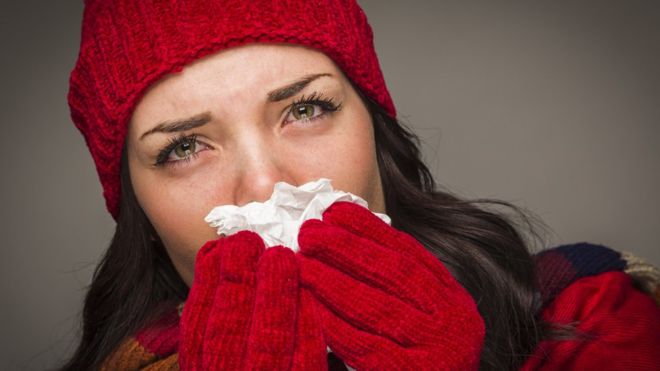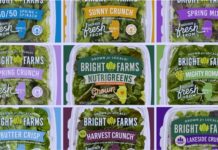One of the strains circulating this year – H3N2 – has been dubbed Aussie flu because it is the same strain that recently caused big problems for Australia.
Australia’s 2017 flu season was the worst the country had experienced in nearly a decade.
Experts are waiting to see if similar will happen in the UK, after a recent rise in cases.
What is Aussie flu?
Every winter there are a few strains circulating and Aussie flu or H3N2 is just one of them. It is an influenza A virus that appears to cause more severe infections in young children and the elderly.
Most people will recover in about a week and won’t need any specific treatment, apart from a bit of bed rest, some paracetamol or ibuprofen and drinking plenty of fluids.
But for some – the very old, very young or people with pre-existing health conditions such as heart disease – flu can be deadly.
Is Aussie flu worse than other types of flu?
The UK is seeing a mix of flu types circulating including influenza B as well as the H3N2 strain.
H3N2 is not new. It was around last winter too.
Any strain of flu, including H3N2, can be dangerous for people who are vulnerable to it.
Experience from last winter suggests the elderly are a high risk group for H3N2.
Influenza viruses are given different names based on their type – A, B and C. A is usually the most serious while C is usually a milder infection. They can be further subdivided according to the proteins that they carry on their surface. These are called H and N antigens.
How bad is the situation in the UK?
Hospital admissions and GP visits for influenza have seen a sharp rise going into 2018, but are still comparable to the previous winter and are nowhere near as high as in 2008-09 when the swine flu pandemic hit the UK.
Professor Paul Cosford, Medical Director, Public Health England said: “As we would expect at this time of year, flu levels have increased this week. Our data shows that more people are visiting GPs with flu symptoms and we are seeing more people admitted to hospitals with the flu. The vaccine is the best defence we have against the spread of flu and it isn’t too late to get vaccinated.”
What about the flu jab?
The vaccine is designed to protect against the type of flu circulating in any given season.
Every year, the World Health Organization reviews the global situation and recommends which flu strains should go into the vaccine to be manufactured for the following season.
This year’s flu jab is designed to protect against H3N2 as well as some other strains.
How effective is it?
Vaccination is the best protection we have against flu.
But flu is unpredictable. Flu viruses constantly mutate and change, so it is a moving target to fight.
Public Health England says typical effectiveness of the flu vaccine is 40-60%, which means that for every 100 people vaccinated, between 40 and 60 will be protected.
At risk people are advised to have annual flu jabs because flu strains can change from year to year, plus protection from the flu vaccine may wane after about six months.
Adults aged over 65, pregnant women and those with underlying health conditions are advised to get a free flu jab.
A flu nasal spray is available free to young children, who are thought to be the main spreaders of flu.
Why doesn’t it stop all strains?
In general, current flu vaccines tend to work better against influenza B and influenza A/H1N1 viruses than H3N2, according to US experts at the Centres for Disease Control and Prevention.
“That’s something that we are watching closely to see if it is an issue this winter.”
How the vaccines are made might also determine their effectiveness, according to research.
Flu vaccines used in the UK and in many other parts of the world are currently grown in chicken eggs and this process can be tricky.
When they tested the vaccine in animals and humans they found the H3N2 part did a partial job of protecting against this strain of flu.
The vaccine had 20-30% effectiveness against H3N2.
Experts stress this is still our best defence against the virus.
And the jab provides excellent protection against other flu strains.
A spokesman from Public Health England said: “Although we would like this to be higher, this is still a very valuable level of protection against what can be a nasty and sometimes deadly illness.”
Should I have a flu jab?
Experts recommend that all those who are eligible for a free flu jab on the NHS should take up the offer.
If you want to protect yourself against flu and you’re not in one of the groups, you can buy the flu jab from high street pharmacies.
A flu nasal spray is available to two and three-year-olds and some children at primary school.
Front-line health and social care workers are also eligible to receive the flu vaccine.




